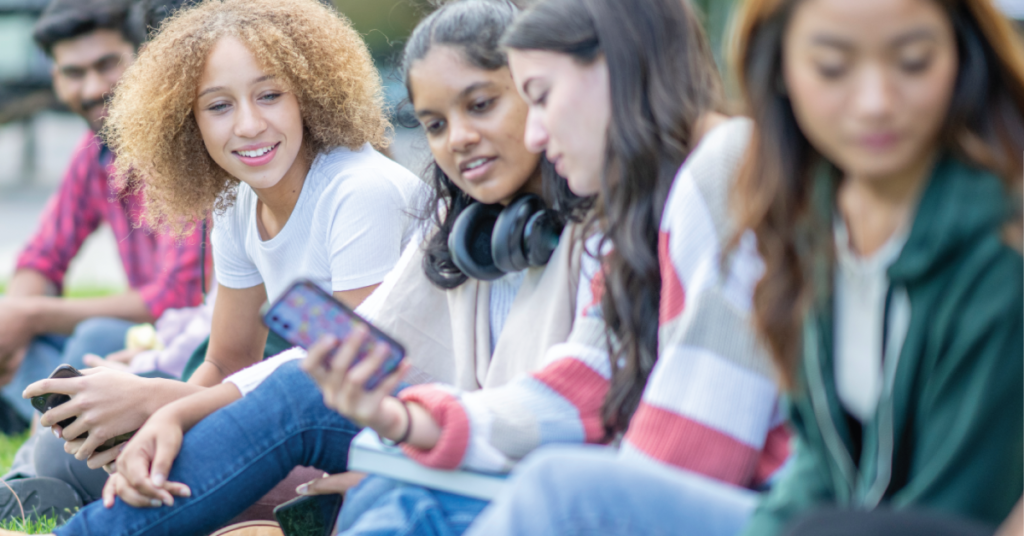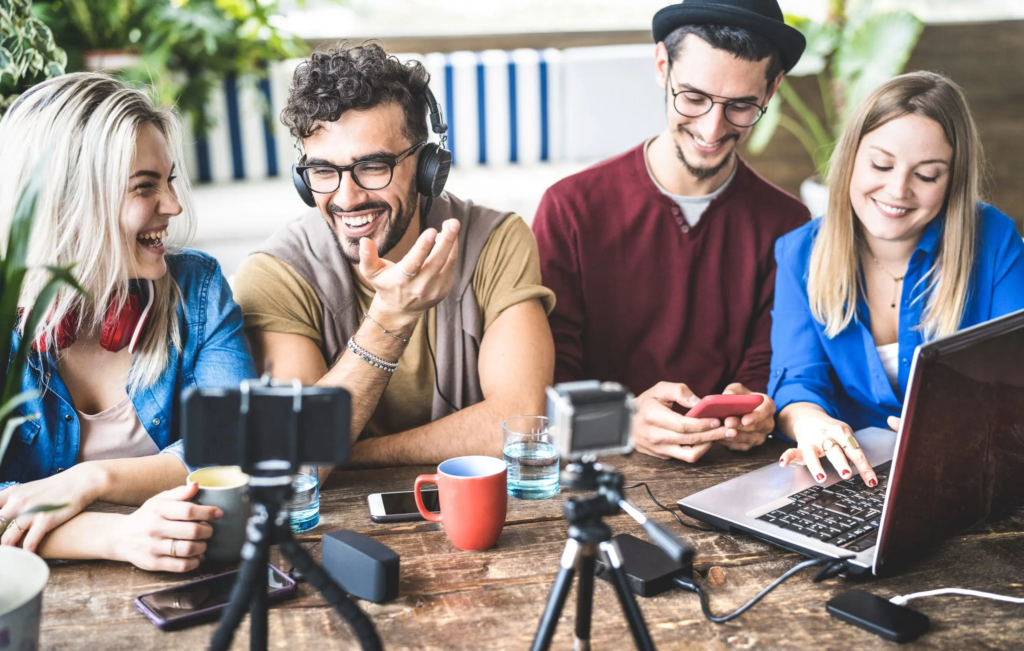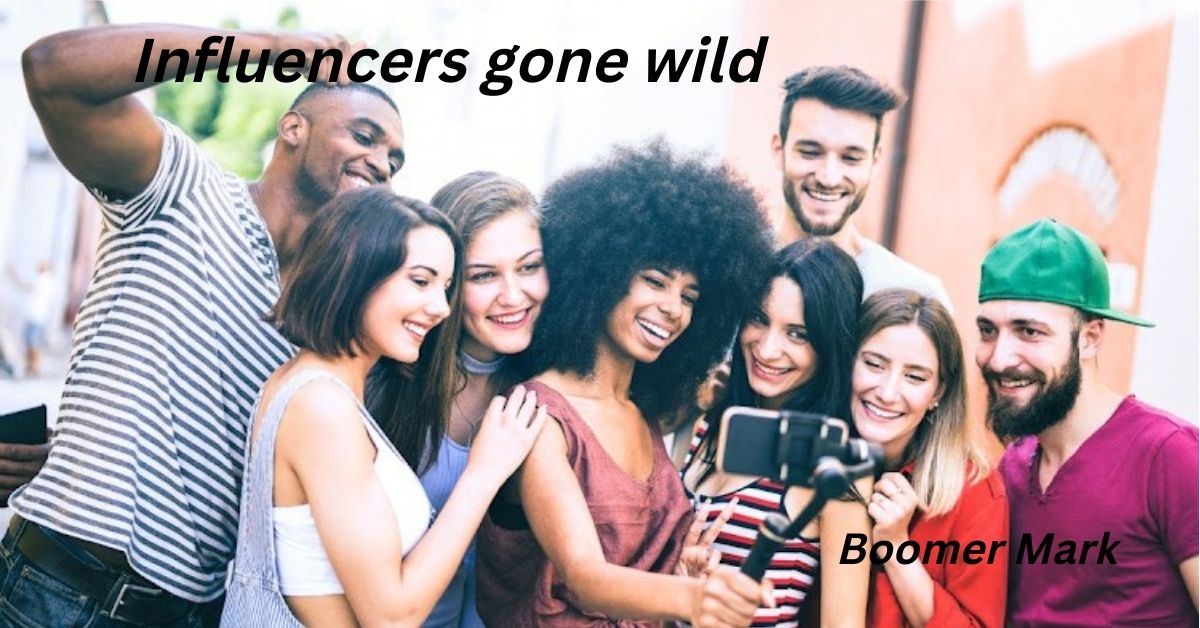In recent years, social media has become a platform for individuals to showcase their creativity, lifestyle, and personalities. Among these individuals, influencers have gained massive followings by sharing their lives, opinions, and experiences. However, a growing trend of “influencers gone wild” has surfaced, where influencers push boundaries and engage in extreme stunts, viral challenges, and shocking behavior that attract attention but sometimes come with unintended consequences. These actions often generate headlines, spark debates, and even stir controversy. This article delves deep into the phenomenon of “influencers gone wild,” examining its causes, effects, and the lessons we can learn from these viral moments.
What Does “Influencers Gone Wild” Mean?
The term “influencers gone wild” refers to influencers on social media platforms who engage in extreme, reckless, or controversial behavior to gain attention or increase their popularity. These actions can include participating in dangerous challenges, making shocking public statements, or attempting stunts that cross the line between entertainment and irresponsibility. The aim of these influencers is often to go viral, but the consequences of such actions can vary from gaining temporary fame to suffering long-term reputational damage.

This behavior is not limited to one platform; it spans across Instagram, TikTok, YouTube, and other social media platforms where influencers thrive. With millions of followers, these individuals have a powerful impact on their audiences, making their actions widely scrutinized and talked about.
Also Read:Oneworldcolumns.org/: A Gateway to Global Awareness and Cultural Preservation
The Rise of Influencers and Their Impact on Social Media
Social Media as a Stage for Self-Expression
Social media platforms have transformed how we communicate, share information, and interact with others. In the past decade, influencers—individuals with large social media followings—have become a cultural force. They use their platforms to share personal experiences, advertise products, and promote lifestyles. With platforms like Instagram, TikTok, and YouTube, influencers have built empires out of sharing everyday moments or creating content that speaks to their audience’s interests.
The Power of Viral Content
The allure of viral content is undeniable. It promises fame, recognition, and, in some cases, financial rewards. Influencers are aware of the viral potential of their content, and many seek to capitalize on this by posting eye-catching, shocking, or controversial material. This is where the trend of “influencers gone wild” comes in. By pushing the envelope with extreme behavior, influencers aim to stand out and ensure their content gets noticed by both followers and mainstream media.
The Role of Social Media Algorithms
Social media platforms are built around algorithms that prioritize content based on user engagement, such as likes, comments, shares, and views. The more engagement a post receives, the more likely it is to be pushed to the top of feeds or trending pages. Influencers understand this, and many have learned to exploit the algorithm to their advantage by posting content that is more likely to provoke a reaction. This can include everything from controversial opinions to physically dangerous stunts.
The Craze of Viral Challenges and Shocking Stunts
Dangerous Challenges That Went Too Far
One of the key aspects of “influencers gone wild” is participation in viral challenges. Some of these challenges are fun and harmless, but others are outright dangerous. The Internet is filled with examples of influencers engaging in extreme challenges for views, likes, and follows. From the infamous “Tide Pod Challenge,” where people ate laundry pods, to the “Bird Box Challenge,” where individuals blindfolded themselves while engaging in risky activities, influencers have been known to participate in stunts with little regard for their safety or the consequences.
Extreme Stunts for Fame
The competition for attention on social media is fierce. In order to stand out, some influencers have turned to extreme stunts—things like bungee jumping from skyscrapers, eating bizarre foods, or performing physical feats that defy logic. These stunts may seem harmless at first, but when they push the limits of safety, they cross a dangerous line. Even though influencers might claim these stunts are done for fun or to entertain their audience, they often result in accidents, injuries, or negative backlash when the public perceives them as irresponsible.
Also Read:Video Games Harmonicode: A Complete Guide to Understanding Its Impact and Future
Examples of Influencers Gone Wild
There are countless examples of influencers who have engaged in shocking behavior to gain attention. Take the case of the infamous “prank wars” that have become viral content in recent years. Some influencers stage elaborate pranks on their friends, family members, or even strangers, with the intention of capturing their reactions. While many pranks are meant to be funny, some have escalated into dangerous or inappropriate territory, leading to public outrage and consequences for the individuals involved.
Another example is the trend of influencers engaging in risky activities like climbing skyscrapers or hanging off the edges of cliffs to capture extreme selfies. While these stunts may result in a surge of likes and shares, they also put the influencer’s life at risk and send a harmful message to their followers, particularly younger viewers who may imitate these behaviors.
The Dark Side of “Influencers Gone Wild”
The Mental Health Cost of Seeking Attention
While social media provides influencers with a platform to express themselves, it also brings intense pressure. Influencers often find themselves in a race to stay relevant by posting content that goes viral. The constant need to one-up previous posts can lead to mental health issues such as anxiety, depression, and burnout. Influencers may feel they must engage in increasingly extreme behavior to keep their followers engaged and avoid falling into obscurity.

The desire for validation through likes, comments, and shares can distort an influencer’s sense of self-worth. This pressure to be constantly entertaining, shocking, or sensational may lead to burnout, unhealthy comparisons, and a skewed perception of success. When influencers go to extreme lengths for attention, the toll it takes on their mental well-being cannot be overlooked.
Reputation Damage and Public Backlash
In the digital age, reputation is everything. A single mistake or controversial action can quickly spiral out of control, leading to public backlash, loss of sponsorships, and even being de-platformed from social media sites. When influencers engage in “gone wild” behavior, they risk alienating their followers and attracting negative attention. The public’s perception of influencers is fragile, and actions that go too far can lead to long-lasting consequences.
For example, influencers who take part in controversial or dangerous stunts may face harsh criticism from their followers, other influencers, and even brands that once supported them. Some influencers have lost lucrative brand deals and sponsorships as a result of their reckless behavior. In some cases, influencers who engage in illegal or harmful activities may even face legal repercussions.
Also Read:About Zaqrutcadty7 Bonus A Comprehensive Guide: Everything You Need to Know
Legal Consequences of Extreme Stunts
There are legal risks associated with influencers’ wild behavior. Many viral challenges and stunts involve violating laws, endangering public safety, or infringing on others’ rights. For example, some influencers who participate in illegal pranks or stunts in public places can be arrested for disturbing the peace, trespassing, or even assaulting others. In certain instances, influencers may face criminal charges for engaging in unsafe activities, such as reckless driving or endangering minors.
The legal consequences of “influencers gone wild” behaviors serve as a reminder that the pursuit of fame and attention can come at a high cost—one that not only affects the influencers themselves but also those around them.
The Ethics of “Influencers Gone Wild”
Responsibility to Followers
With great power comes great responsibility. Influencers hold a unique position in society due to their ability to shape opinions and influence behavior. Because they have such a large and often impressionable following, influencers must consider the ethical implications of their actions. Posting content that promotes dangerous behavior or disregards social norms can have serious consequences on their followers, especially younger audiences who are more likely to imitate what they see online.
Influencers have a moral obligation to set a good example for their followers. While it’s easy to get caught up in the allure of going viral, influencers should carefully consider the potential risks and consequences of their actions. Promoting positive messages, supporting good causes, and setting healthy boundaries in content creation can make a significant impact on their followers and society as a whole.
The Need for Accountability
It’s not just influencers who should be held accountable for their actions; platforms like Instagram, TikTok, and YouTube also share responsibility. Social media companies have a duty to regulate harmful content and ensure that their platforms are not used to promote unsafe behavior. The rise of “influencers gone wild” highlights the need for stronger content moderation and policies to protect viewers and prevent the spread of dangerous trends.
How to Avoid Falling into the “Influencers Gone Wild” Trap
Stay Authentic and Responsible
Influencers can maintain their popularity without resorting to shocking or dangerous behavior. By staying authentic and true to their values, they can build a loyal following based on trust and mutual respect. Creating content that aligns with their personal brand and values can help them maintain a long-term career without compromising their safety or well-being.

Set Boundaries and Prioritize Mental Health
To avoid falling into the trap of constantly seeking attention, influencers should set clear boundaries and prioritize their mental health. Engaging in self-care practices, seeking professional support when needed, and taking breaks from social media can help influencers maintain a balanced perspective and avoid the pressures that come with going viral.
Also Read:When COVATZA3.9 Software Built: A Comprehensive Guide to Its Development, Features, and Impact
Conclusion
The phenomenon of “influencers gone wild” highlights the dark side of social media fame. While pushing boundaries and engaging in shocking behavior may provide temporary attention, it often comes with severe consequences, both personally and professionally. Influencers must be mindful of the impact of their actions on themselves, their followers, and society as a whole. By choosing to create content responsibly and authentically, influencers can maintain their influence without compromising their integrity or safety.
FAQs about influencers gone wild
What does “influencers gone wild” mean?
“In influencers gone wild,” influencers engage in extreme or controversial behaviors to gain attention, often resulting in viral content. These actions may include dangerous stunts, shocking statements, or participating in harmful viral challenges.
Why do influencers engage in extreme behavior?
Many influencers engage in extreme behavior to stand out in a crowded online space and gain attention. The desire for validation and the need to go viral can drive influencers to push boundaries, sometimes resulting in reckless actions.
What are the dangers of influencers gone wild?
The dangers include physical harm from dangerous stunts, damage to an influencer’s reputation, public backlash, loss of brand deals, and legal consequences. These actions can negatively impact both the influencer and their followers.
How can influencers avoid falling into the “gone wild” trap?
By staying true to their values, setting boundaries, prioritizing mental health, and creating responsible content, influencers can maintain their popularity without resorting to extreme behaviors.
Can social media platforms regulate influencer behavior?
Yes, social media platforms have a responsibility to regulate harmful content and prevent the spread of dangerous trends. Stronger content moderation policies are necessary to protect users and prevent harmful behavior.
